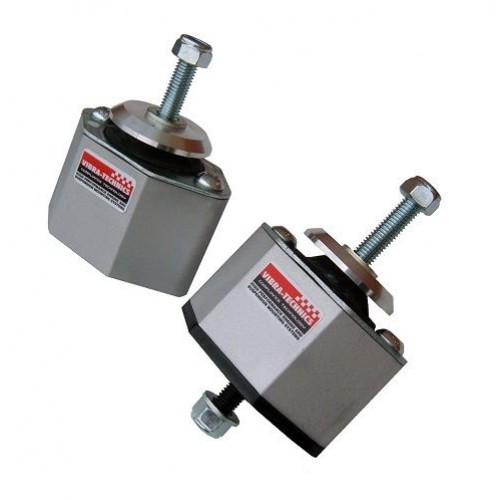Vibra Technics Transmission mount
Replaces the troublesome front and rear engine mount on the T series engine. Using these mounts significantly reduces engine movement on full power and overrun improving the feel of the car. It offers superior durability over the standard engine mounts and eliminates the need for the torque links that are bolted to the engine mount brackets on the original installation. The complete kit price is for the two mounts.
Replaces OEM part numbers:-
KKB100900
KKB100890
KKB100930
This product is compatible with the following vehicles
| Vehicle Make | Vehicle Model | Vehicle Variant | From | To | Engine | Notes |
| Rover | 200 Series | 220 | 1991 | 1993 | 20M4F | 2.0L - FWD Petrol |
| Rover | 200 Series | 220 | 1992 | 1996 | 20T4G | 2.0L Turbo - FWD Petrol |
| Rover | 200 Series | 220 | 1992 | 1996 | 20T4H | 2.0L - FWD Petrol |
| Rover | 200 Series | 220 | 1993 | 1995 | 20T4H | 2.0L - FWD Petrol |
| Rover | 200 Series | 220 | 1993 | 1995 | 20T4G | 2.0L Turbo - FWD Petrol |
| Rover | 200 Series | 220 | 1995 | 2000 | 20T2R | 2.0L - FWD Diesel |
| Rover | 200 Series | 220 | 1995 | 2000 | 20T2N | 2.0L direct injection - FWD Dies |
It was realized in the early 1990's that there were some fast and expensive sports cars being built with fairly crude engine mountings and that little was available for the specialist car manufacturer when it came to a design and supply service for small numbers of engine mounting systems. Vibra-Technics Automotive was originally established to fill that gap. Subsequently racing and fast road saloon car mounts were developed for a variety of makes and this has grown the business to where Vibra-Technics are offering over 75 specific products for high performance cars with another 18 general products which can be used in a variety of applications from ATV's to V8 engined kit cars.
Vibra-Technics products are manufactured primarily from natural rubber compounds and occasionally from blends of synthetic and natural rubber to give particular properties for specific applications. Extensive experience and testing in all kinds of environmental conditions by Automobile Manufacturers has shown that only natural rubber compounds give optimum performance and durability (which is why it is still universally used today by every car manufacturer). Where the rubber needs to be attached to metal components, this is achieved by chemically bonding the rubber to the metal during the molding process, using the latest chemical adhesive systems.

























